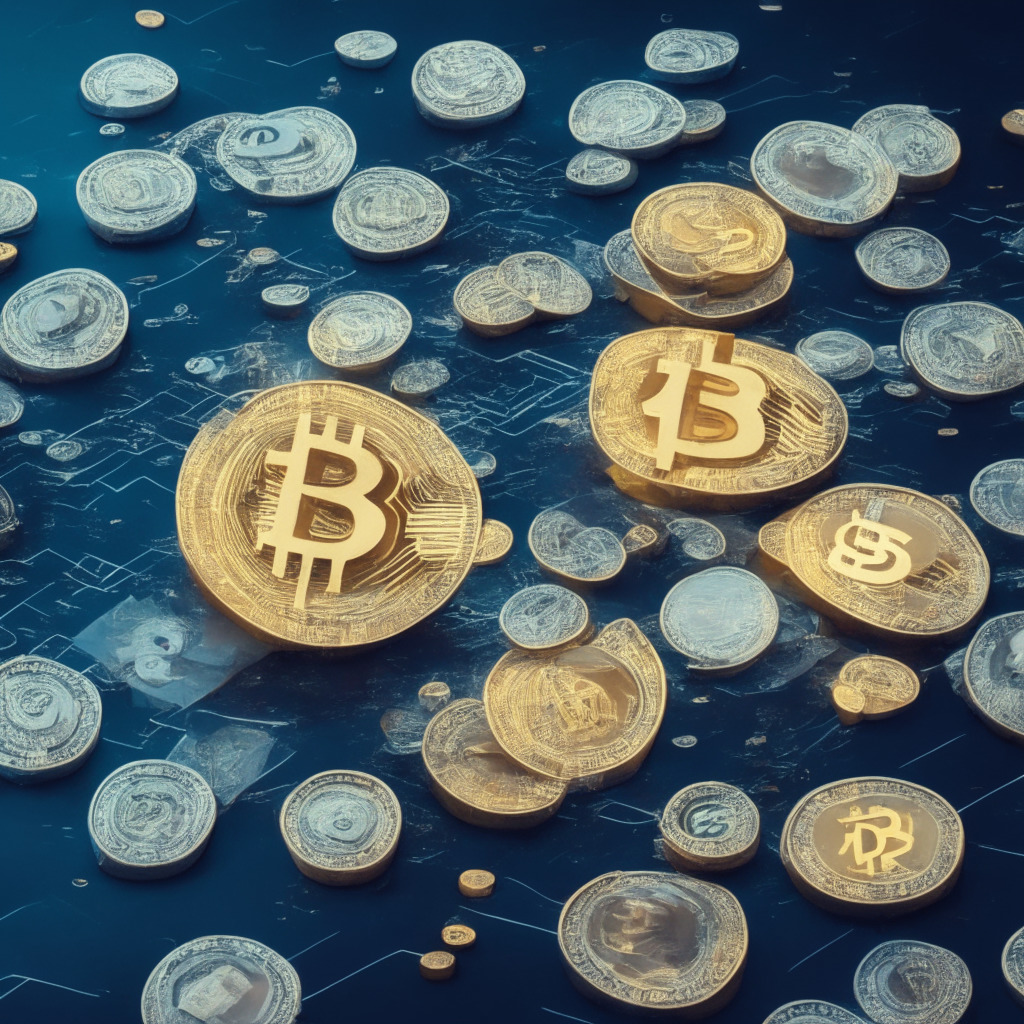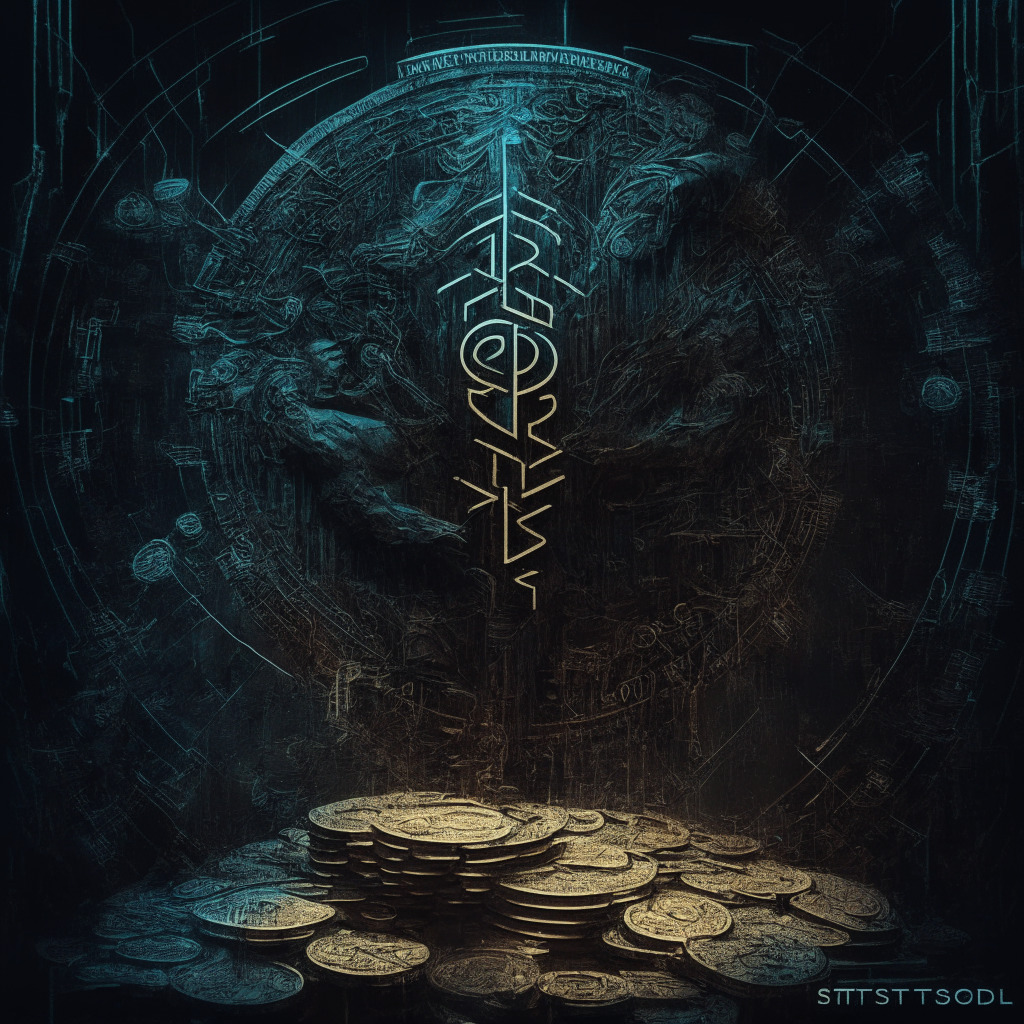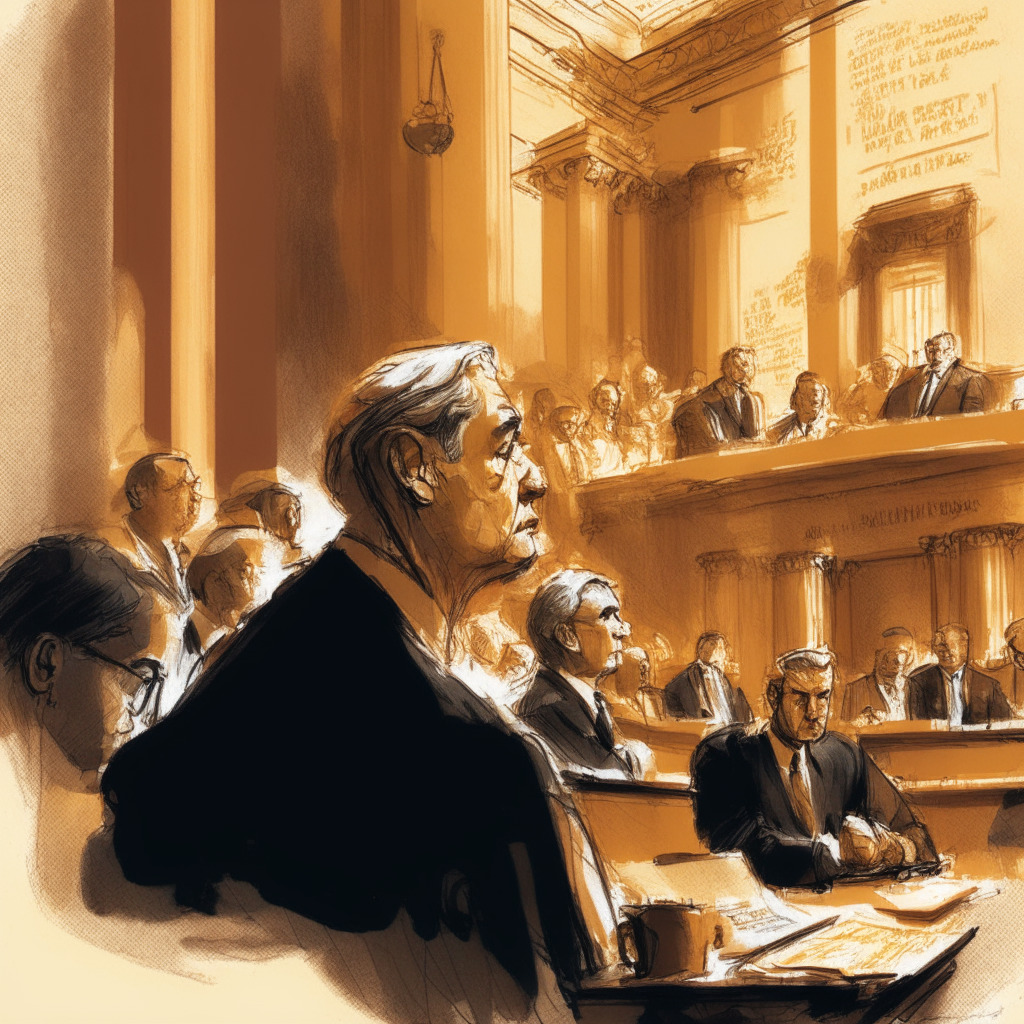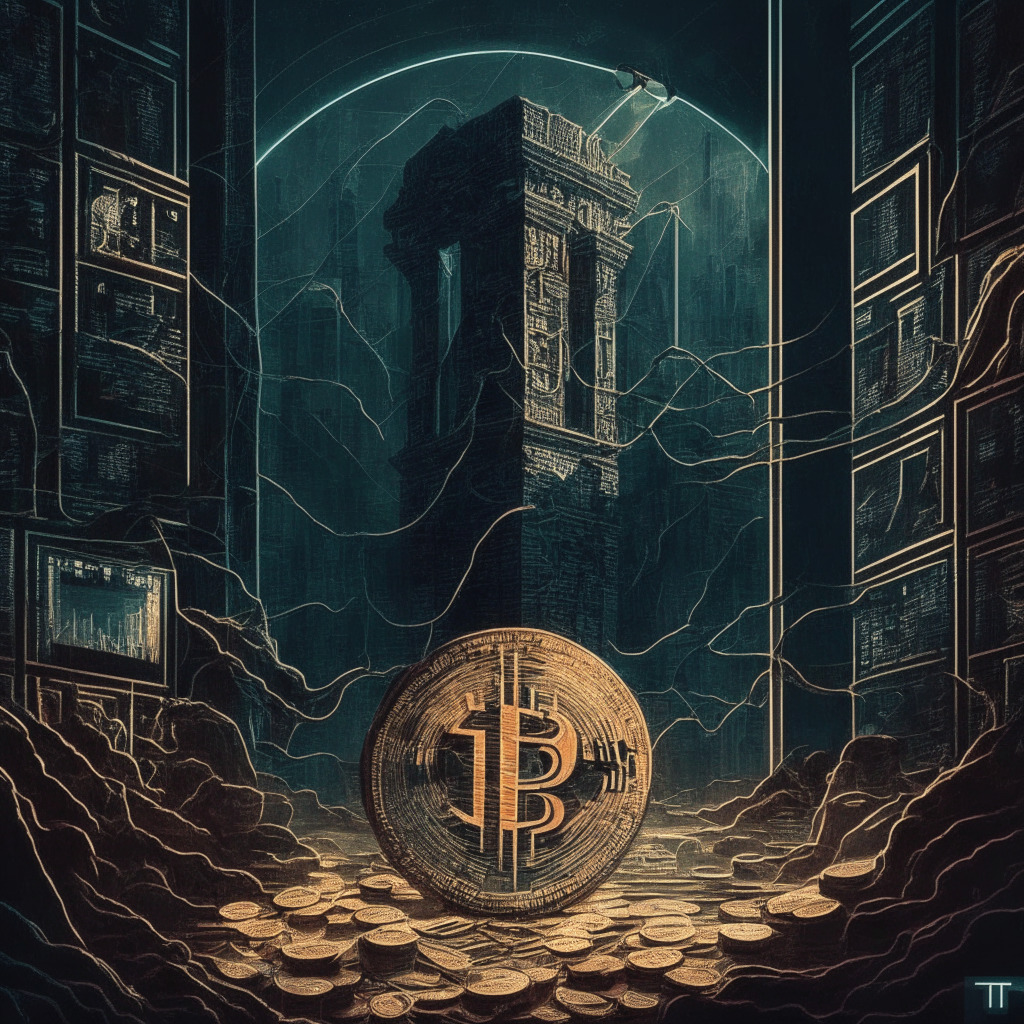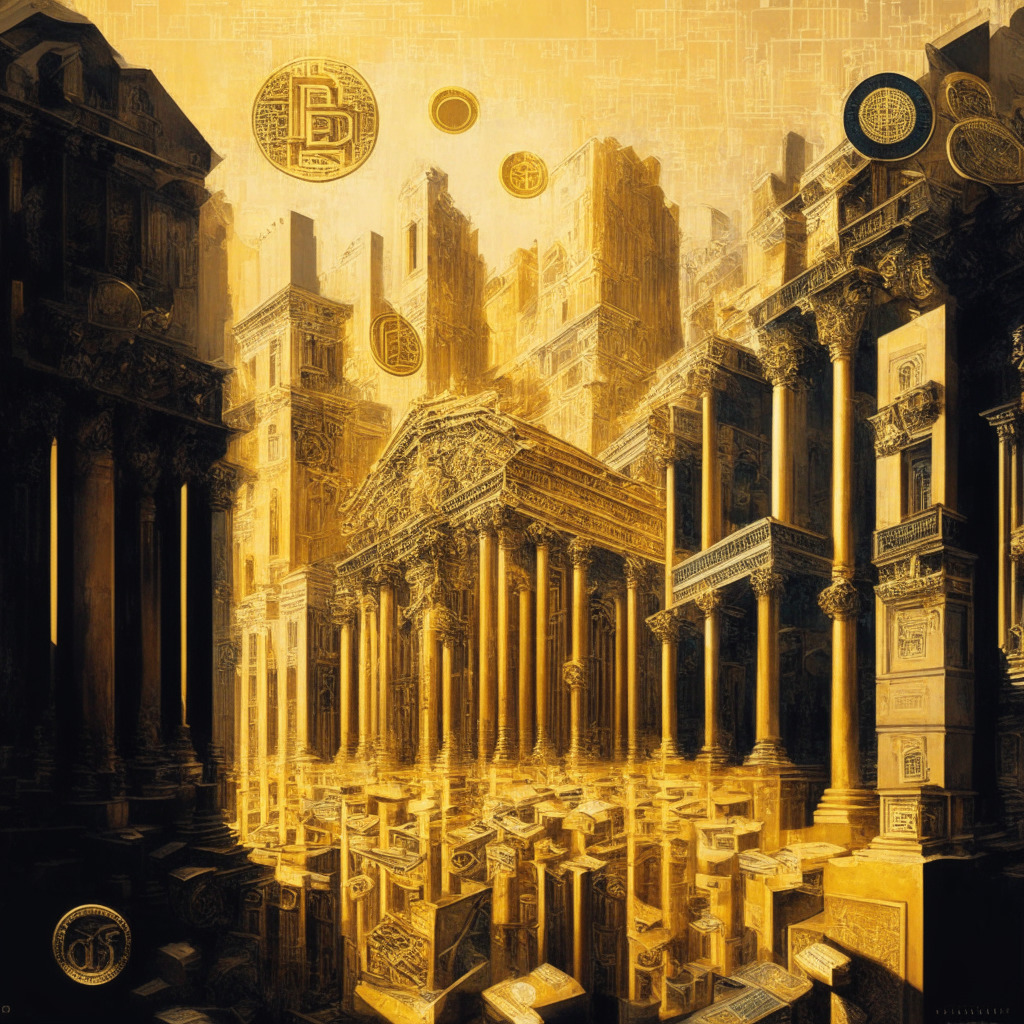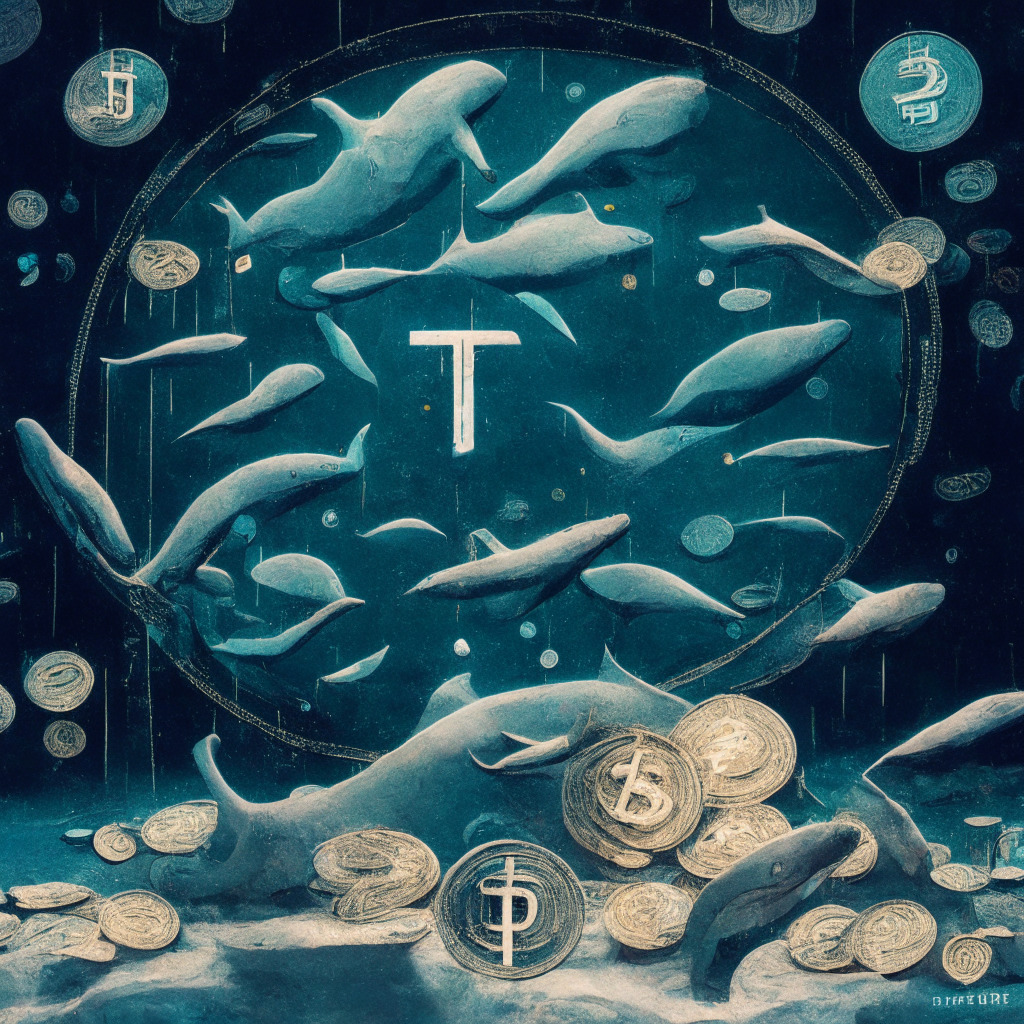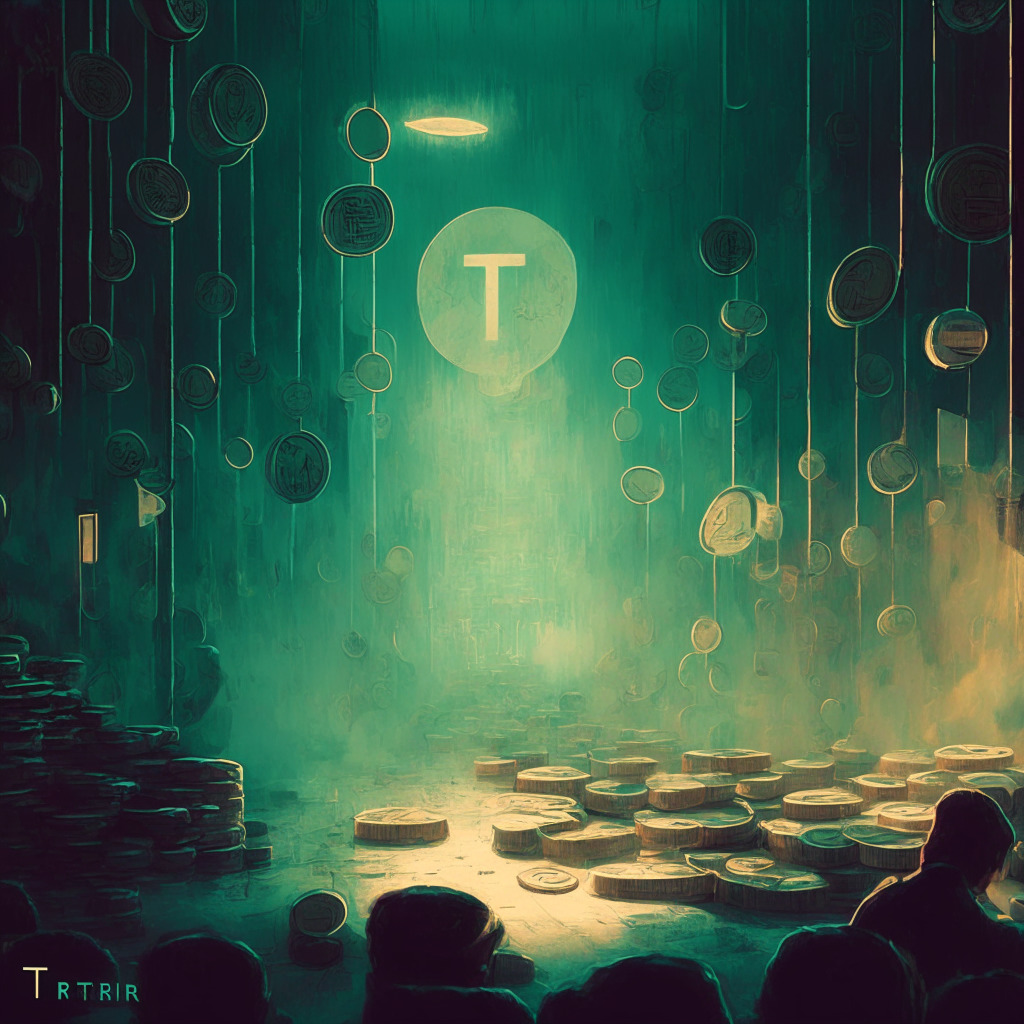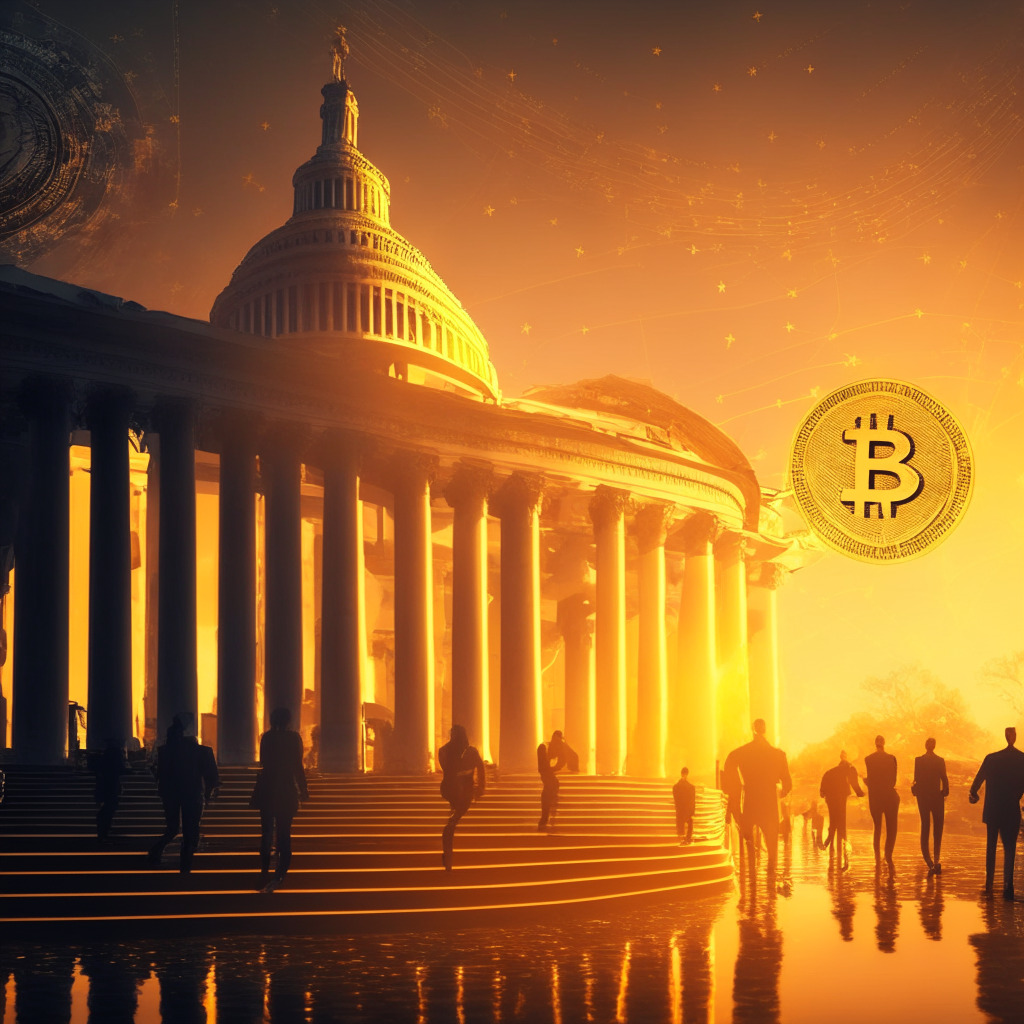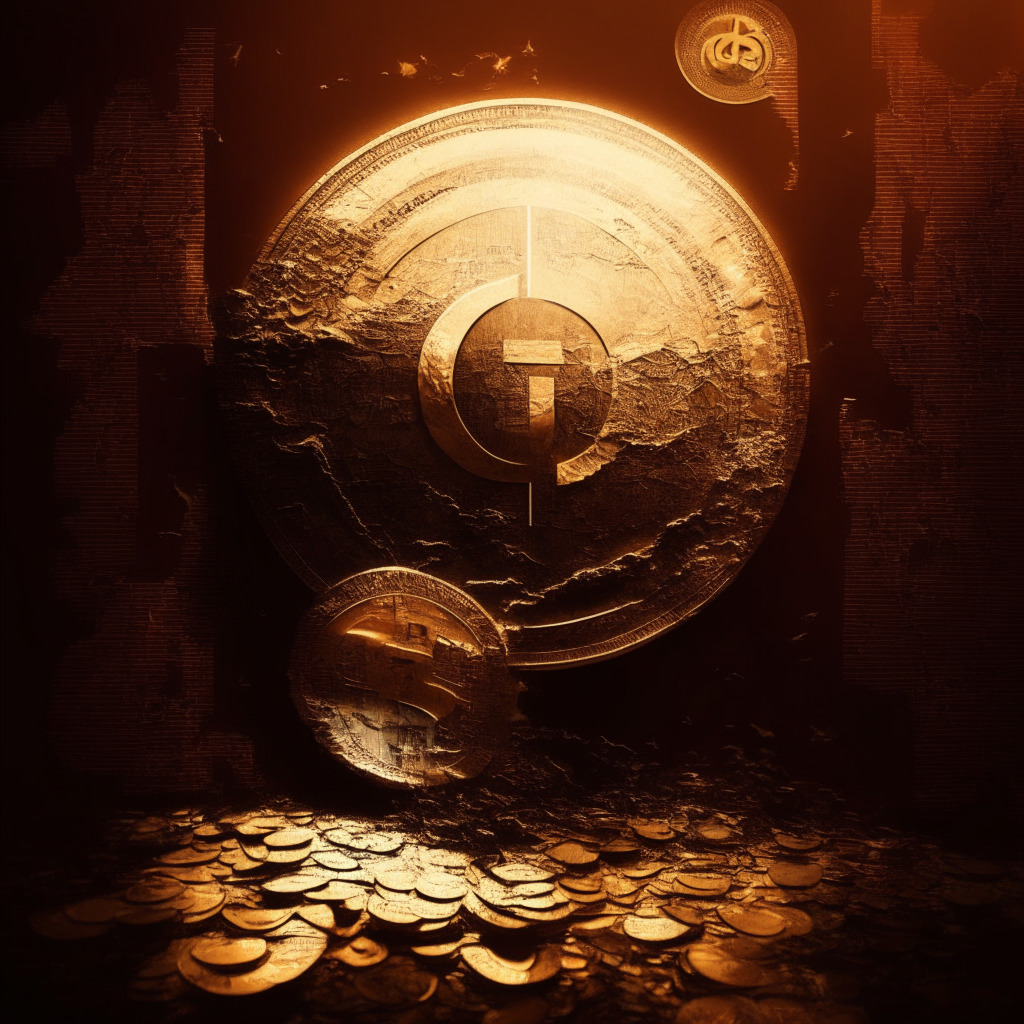The now-collapsed Silicon Valley Bank (SVB) reportedly had Circle as its single largest asset-weighted customer, holding $3.3 billion at the time of collapse. The incident raises questions about stablecoins like Circle’s USDC and underlines the importance of due diligence and contingency planning in the crypto industry.
Search Results for: stablecoin
Binance.US Resolves Withdrawal Issues, Pushes Stablecoin Adoption Amid Banking Concerns
Binance.US has resolved its USD withdrawal issues, but cautions users that banking partners may cease services soon. The exchange is seeking alternative partners and recommends users convert USD balances to stablecoins, anticipating a transition towards a crypto-only exchange.
Japan’s Stablecoin Law: Opportunities, Challenges, and the Future of Crypto
Japan’s largest bank, Mitsubishi UFJ Financial Group (MUFG), is engaging in discussions with global stablecoin issuers to mint tokens on its Progmat blockchain platform, following Japan’s new stablecoin law. MUFG’s VP of Product, Tatsuya Saito, emphasized the importance of stablecoins in providing reliable assets for investors during volatile trades and how Japan could potentially become a hub for stablecoin issuance.
Navigating Stablecoin Challenges: TrueUSD’s Resilience Amid Prime Trust Troubles
TrueUSD announced its TUSD stablecoin has no exposure to the troubled Prime Trust, which halted all fiat and crypto deposits and withdrawals. Despite a temporary halt in minting activities, TrueUSD maintains multiple partnerships and “USD rails” for continuity of service, highlighting the importance of stablecoin issuers’ resilience to disruptions and the need for transparency and safeguards within the digital asset space.
Stablecoins, CBDCs, and the Future: Balancing Innovation, Privacy, and Regulation
Federal Reserve Chair Jerome Powell addressed digital assets, stablecoins, and central bank digital currencies (CBDCs) during a recent House Financial Services Committee. Stablecoins offer efficient, cost-effective payments with stability, but concerns over privacy and regulation arise. Powell suggests CBDCs would be intermediated through banks, not individuals’ accounts, sparking ongoing debates on financial institutions’ role and the future of digital currencies.
Fed Chair Powell Pushes for Central Bank-Regulated Stablecoins: Innovation vs Security Debate
Federal Reserve Chair Jerome Powell emphasizes the need for a strong federal presence in stablecoin supervision during a monetary policy hearing, asserting the central bank’s crucial role in oversight. As the crypto landscape evolves, creating a regulatory framework that balances stablecoins’ potential benefits and investor protection is vital for future success.
SEC Crackdown on DeFi and Stablecoins: Analyzing Pros, Cons, and Market Implications
The SEC is potentially targeting decentralized finance (DeFi) and stablecoins, including Tether (USDT) and USD Coin (USDC), in its enforcement crackdown, according to a Berenberg report. Stablecoins, essential to the DeFi ecosystem, have raised national security concerns due to weak sanctions and money laundering controls. The SEC aims to weaken DeFi’s capacity to rival regulated exchanges and lenders.
Tether and Kava Partnership: Stablecoin Expansion Amid Reserve Concerns
Tether plans to launch USDT tokens on Kava, a scalable layer-1 blockchain, providing Kava’s community access to the dependable stablecoin. Despite concerns about USDT’s stability and reserves, this partnership strengthens Tether’s position as a market-leading stablecoin.
SEC Crackdown on Stablecoins and DeFi: Impact on Market and Bitcoin’s Rising Dominance
The U.S. SEC may soon target stablecoins and DeFi protocols in its crackdown on the crypto industry, potentially impacting Coinbase’s revenue from USDC interest income, according to Berenberg’s research report. However, Bitcoin could emerge as a beneficiary, shifting focus toward Bitcoin-centric investments and companies.
Stablecoin Reserve’s $20M Move: Boosting Liquidity and Power in Yield Farming Governance
Reserve has invested $20 million into the governance tokens of yield farming applications, aiming to enhance RTokens’ liquidity and increase Reserve’s voting power. The investment could introduce new features such as collateralized loans, wallet products, and tokenizing real-world assets, benefiting the growth and adoption of stablecoins.
USTC Repeg Revival: Terra Luna Classic Teams Unite for Stablecoin’s Future Growth
Terra Luna Classic’s core developer Joint L1 Task Force (L1TF) plans to collaborate with RedlineDrifter-led USTC repeg team on the revival of TerraClassicUSD (USTC) price to $1. Following the v2.1.1 parity upgrade, both teams will focus on USTC stablecoin, addressing community concerns and enhancing chain utility.
Binance.US Market Share Plummets: Regulatory Scrutiny’s Impact on Exchanges and Stablecoins
Binance.US has experienced a decline in trading volume share, dropping to 4.35% amid legal challenges and increased regulatory scrutiny. Meanwhile, Binance-branded stablecoin Binance USD (BUSD) has lost popularity with its market cap falling from $5.5 billion to $4.3 billion.
Crypto Regulation Wars: Terraform Labs, Stablecoins, and the Battle for Blockchain’s Future
Terraform Labs co-founder and former CFO face prison sentences and extradition due to fraud charges, highlighting challenges and regulatory uncertainties in the cryptocurrency industry. As stablecoins gain traction, striking a balance between fostering innovation and protecting investors is a pressing challenge for global regulators.
BUSD Market Cap Plummets: The Impact of Regulatory Scrutiny on Stablecoins
Binance-branded BUSD stablecoin’s market cap has dropped to $4.3 billion, falling behind DAI, due to regulatory actions against Paxos, the issuer of BUSD. Stricter regulatory measures led Paxos to end its relationship with Binance, impacting the stablecoin’s market position.
BUSD’s $1 Billion Market Cap Dip: Analyzing Stablecoin Dynamics & Regulatory Impact
Binance USD’s market cap recently dipped over $1 billion, amid challenges including a Wells Notice, NYDFS order to halt issuance, and an SEC lawsuit. This raises questions about the future of dollar-pegged stablecoins and regulatory influence on their operations and adoption.
USDT Stablecoin: Uncovering Chinese Backing and the Quest for Transparency in Crypto
Documents from the New York Attorney General’s Office reveal Tether’s USDT stablecoin was backed by Chinese securities, contradicting previous denials. Tether held foreign securities, including Deutsche Bank and Barclays Bank, to support reserves. The findings prompt questions about USDT’s safety and legitimacy, and emphasize the importance of transparency in the crypto industry.
Diving Into Tether’s Asset Management and Stablecoin Backing: New Insights and Unresolved Debates
The article highlights Tether’s funds distribution across multiple institutions and its reliance on commercial paper to back its stablecoin market cap. Documents from the New York Attorney General’s office offer insights into Tether’s asset storage locations, banking relationships, and asset management practices, amid ongoing concerns within the crypto community.
Chinese Securities, Stablecoin Reserves & Media Outlets: Tether’s Reputation at Stake
Tether addresses reports of backing USDT with Chinese securities, stating the cited materials are outdated and their exposure to Chinese commercial papers was liquidated last year. The company emphasizes the importance of accurate and balanced information for the healthy development of the crypto industry.
Battle for Stablecoin Classification: Terraform Labs Fights SEC Lawsuit with New Documents
In an ongoing lawsuit filed by the SEC, law firm Dentons argues that Terraform Labs’ algorithmic stablecoin UST is not a security but designed for practical use. The legal team highlights the “regulatory gap” in defining crypto assets as securities, with the US Congress still developing regulatory frameworks for digital assets and stablecoin issuance.
MakerDAO’s DAI Rate Hike & Shift to Real-World Assets: Implications for Stablecoins
MakerDAO approved a DAI Savings Rate increase from 1% to 3.49% and rearranged DAI stablecoin’s backing assets. By investing in real-world assets like short-term U.S. government bonds, Maker aims to bridge cryptocurrency with real-world assets, impacting other stablecoins’ market standing like USDP and GUSD.
Tether’s Slight Depegging and AAVE’s Curve Freeze: Analyzing the Impact on Stablecoin Markets
Tether (USDT) experienced a slight depegging from its 1:1 ratio with the US dollar, coinciding with AAVE’s decision to freeze Curve (CRV) use as collateral for loans. This prompted whales and investors to capitalize on arbitrage opportunities, leading to Tether’s depegging at $0.996.
Tether’s USDT Losing Dollar Peg: Impact on Stablecoin Pools and Crypto Landscape
Tether’s USDT stablecoin lost its dollar peg, leading to an imbalance in stablecoin trading pools as traders exchanged USDT for USDC and DAI. This resulted in USDT balances on Curve’s 3pool rising to over 70%, straying from the intended equal distribution among the three stablecoins.
De-peg Scare in Crypto: Analyzing Stablecoin Volatility and Building Resilience
On June 15, USDT stablecoin’s price deviated from its dollar peg value by 0.3% due to an imbalance in Curve’s 3pool, causing concerns among the crypto community. A whale address borrowed 31.5 million USDT and swapped it for USDC, affecting USDT’s dollar-peg value. Tether’s CTO reassured that it’s a temporary issue, reflecting the emerging market’s volatility and growing demand for digital currencies.
Tether Struggles to Maintain Dollar Peg: Impact on Stablecoin Confidence and Markets
Tether (USDT) recently fell below its dollar peg, trading at $0.996, raising concerns among stablecoin users. CTO Paolo Ardoino assured the company’s readiness to face challenges. However, skepticism surrounding Tether’s dollar-backing and decreased investor confidence emphasize the importance of maintaining stablecoin pegs to fiat currencies.
Is Tether’s USDT Stablecoin Under Pressure? Examining Unusual Selling Activity
Speculation mounts that Tether’s USDT stablecoin may be under pressure, with liquidity pools on Uniswap and Curve protocols flooded with USDT sellers. A potential USDT depeg could be catastrophic for the crypto economy, raising concerns over its liquidity and stability amidst growing market share.
Stablecoin Stability: MakerDAO’s Shift to Spark Protocol and Lessons from the USDC Depreciation
MakerDAO is switching to the Spark Protocol to improve DeFi liquidity and stablecoin resilience after the recent USDC depeg. Through direct deposits on automated market makers, the protocol offers better rates and aims to enhance MakerDAO’s stability mechanisms and functionality across various layer-2 protocols.
Urgency for US Stablecoin Bill: Balancing Innovation and Regulation in Digital Currency Future
Circle’s CEO Jeremy Allaire urges US lawmakers to prioritize a stablecoin bill amid global advancements in digital currency regulations. The bill, titled “The Future of Digital Assets”, aims to foster a vibrant and safe digital assets market while balancing innovation and financial stability.
Hong Kong vs US: Stablecoin Regulations by 2024 – Opportunities and Challenges Ahead
Hong Kong and the US aim to introduce stablecoin regulations by 2024, focusing on investor protection and fostering a conducive environment for crypto enthusiasts. Hong Kong has taken the lead in crypto regulations while the US House Committee is working on draft stablecoin bills.
Soaring Stablecoin Popularity in Turkey: Escaping Lira Crisis and Prospering Crypto Market
As Turkey faces economic turmoil and the lira’s value drops, investors are turning to cryptocurrencies, particularly stablecoins like Tether, as a safe haven. With regulations making it difficult to buy dollars or gold, stablecoins offer protection against high inflation, attracting Turkish residents seeking to preserve their wealth amidst ongoing financial crisis.
Stablecoin Bill: Federal vs State Regulation and Impact on Digital Asset Ecosystem
The third draft of the new stablecoin bill, “The Future of Digital Assets: Providing Clarity for the Digital Asset Ecosystem,” proposes the Federal Reserve as the key regulator for stablecoins. The bipartisan bill aims to offer comprehensive guidance on supervising and enforcing stablecoin markets, covering aspects like issuer requirements and payment stablecoins.
Bipartisan Stablecoin Bill: Impact on US Crypto Landscape, Regulation, and Innovation Pros & Cons
The US House Financial Services Committee released a draft stablecoin bill, aiming to bring clarity on the digital asset market structure and regulation of payment stablecoins. The bill includes detailing primary federal regulators, regulations on issuing payment stablecoins, supervision, enforcement, and interoperability. The proposed legislation gives federal agencies more authority and oversight of stablecoins, as a first step toward regulating cryptocurrency in the US.
Bipartisan Stablecoin Regulations: Growth Catalyst or Innovation Stifler?
The House Financial Services Committee’s new draft legislative proposal for stablecoin regulations in the U.S. aims to establish bipartisan consensus. This legislation could bring clarity to the crypto market, however, concerns about increased oversight hindering innovation arise. Democrats’ stance on the current version remains unclear.

